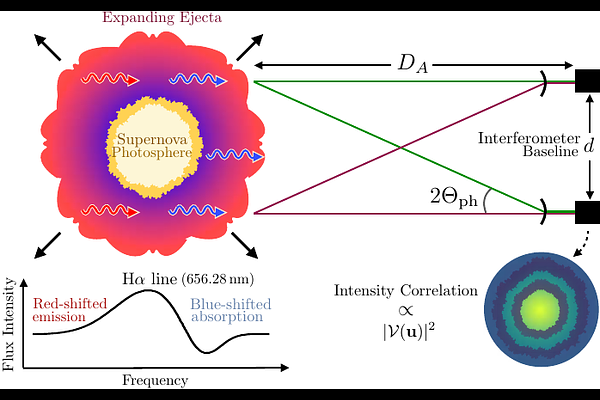Expanding Ejecta Method: II. Framework for Cosmological Distance Measurements via Intensity Interferometry

Expanding Ejecta Method: II. Framework for Cosmological Distance Measurements via Intensity Interferometry
David Dunsky, I-Kai Chen, Junwu Huang, Ken Van Tilburg, Robert V. Wagoner
AbstractWe explore the potential of the expanding ejecta method (EEM) as a cosmological probe, leveraging its ability to measure angular diameter distances to supernovae (SNe) with intensity interferometry. We propose three distinct applications of the EEM: (1) using Type IIP SNe as moderate-distance geometric anchors to calibrate Cepheids, replacing other local distance indicators; (2) directly calibrating Type Ia SNe, bypassing conventional calibration methods; (3) constructing a fully independent Hubble diagram with Type IIP (Type Ia) SNe, entirely decoupled from the traditional distance ladder. Incorporating realistic SN populations, we forecast a Hubble constant precision with next-generation intensity interferometers of $1.6\%$, $1.1\%$, and $9.3\% \,(3.6\%)$, respectively, for the three different proposed applications. Future intensity interferometry could yield improvements to $1.2\%$, $0.6\%$, and $1.5\%\,(0.4\%)$. The EEM thus offers a powerful geometric alternative for cosmic distance determination.